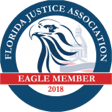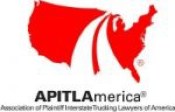Although originally hailed as a Godsend for expectant mothers, the anti-nausea drug Zofran (routinely prescribed to pregnant women to combat debilitating nausea and vomiting) is now turning out to be more of a hazard than a relief. Reports of women who used the drug during pregnancy having babies with various birth defects, including clubbed feet, cleft palate, heart defects, and craniosynotosis (a condition in which the skull is abnormally shaped and may not have enough space for the brain) are becoming more and more commonplace.
Recently, a woman brought suit in New Jersey against the drug manufacturer, GlaxoSmithKline, claiming that her son’s clubbed foot—a congenital defect which results in malformation of the foot, causing it to turn inward so that the bottom of the foot is sideways—was caused by her use of Zofran during her pregnancy with him. In her lawsuit, the woman claimed that GlaxoSmithKline received “hundreds of reports of birth defects associated with the non-FDA-approved Zofran in pregnant women.” She further alleged that the company failed to disclose these troublesome reports to either doctors, who could have shared them with their patients, or could have declined to prescribe the drug, or pregnant women.
This child’s defect, clubfoot, isn’t painful during infancy; however, if the defect is not corrected, the child will never be able to walk. Treatments for this type of injury are not easy on, and can be flat-out painful to, a small child: they include manual manipulation of the muscles, stretching exercises, casts, leg braces, and in more serious cases, surgery on the leg tendons. Sometimes, treatments drag on for years. This particular child endured a tenotomy, the surgical remedy for clubfoot, and now must wear a metal brace which has left him with pressure sores and blisters.
Watching a child endure painful physical treatments is also emotionally scarring for parents. So too is watching other children not accept one’s child. The boy that is the subject of this lawsuit also suffers from sleep deprivation at night due to the metal hitting his crib, and has had difficulty in social settings because other children do not want to play with him.
So what exactly is Zofran? Zofran, also known generically as Ondansetron, works by affecting serotonin levels in the brain after surgery. Doctors, however, prescribed it “off-label” to treat nausea and vomiting during pregnancy (NVP). Initially, when the drug was tested with small control groups—or control groups of women who only started taking the drug when they were 10 weeks pregnant or more—it appeared safe, as there were no birth defects reported. However, later studies indicated that the control group was probably too small to be accurate, or weren’t accurate because they didn’t test women who used the drug earlier in pregnancy when defects are more likely to form.
In any event, if you have taken Zofran during pregnancy and your baby has suffered from a birth defect, we can help determine whether you are entitled to any compensation. Call the skilled attorneys at Brooks Law Group today.














